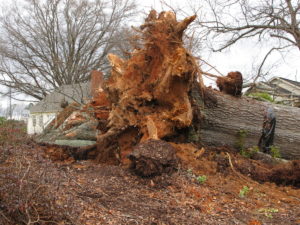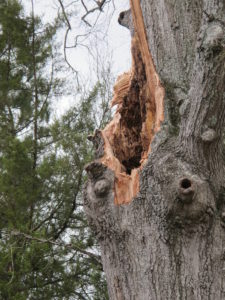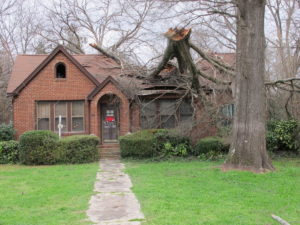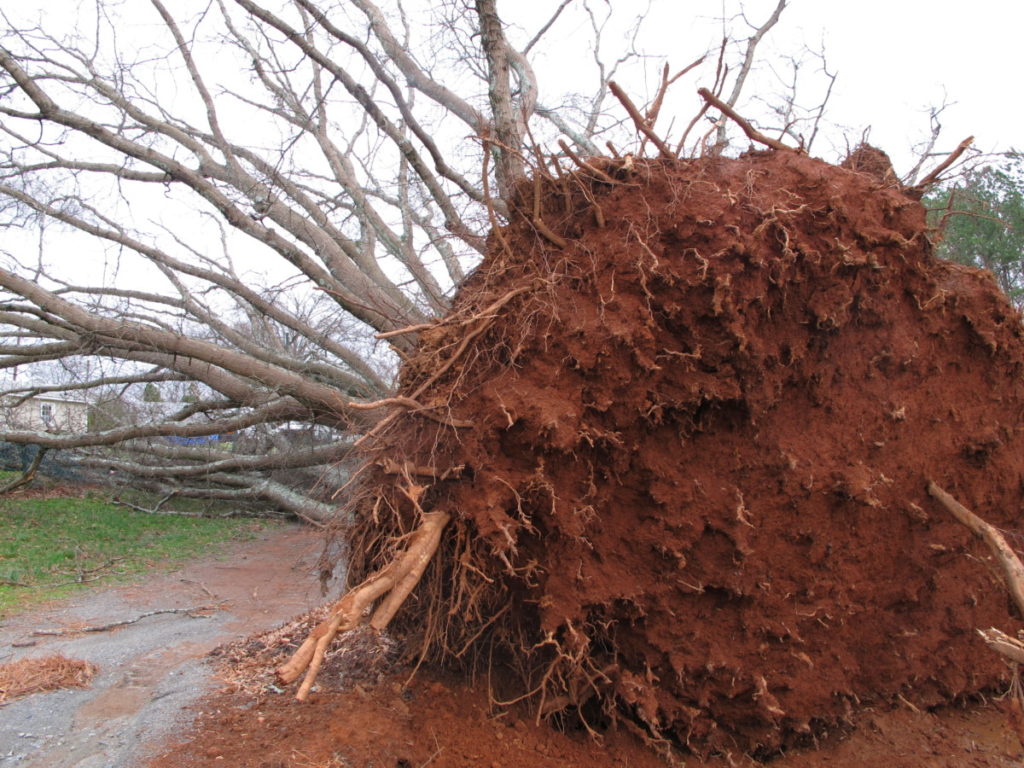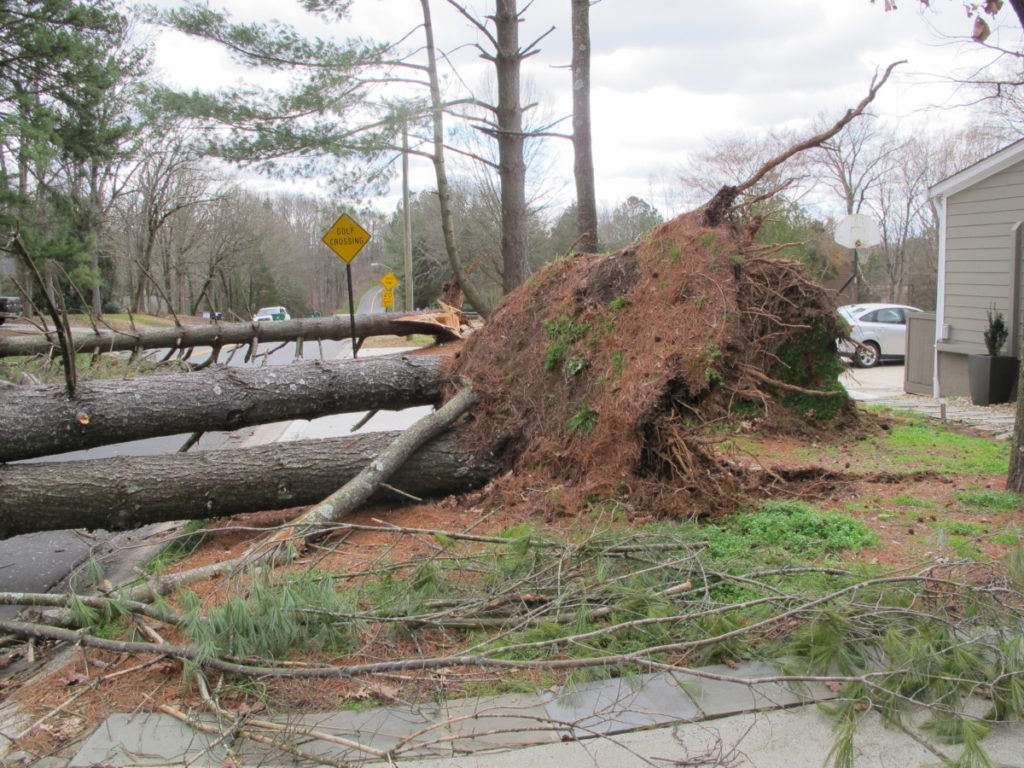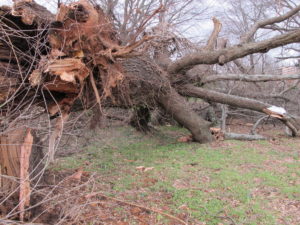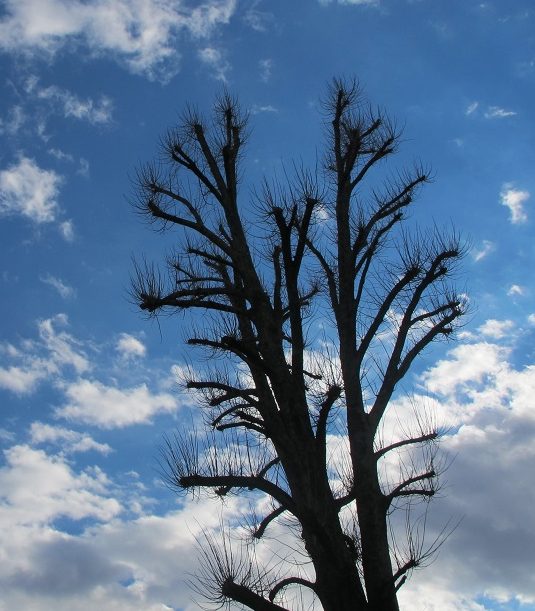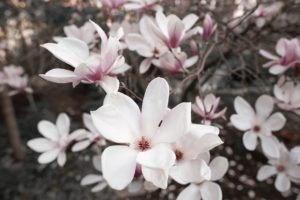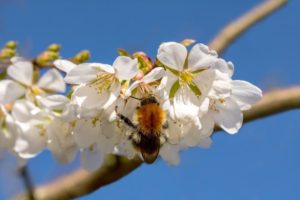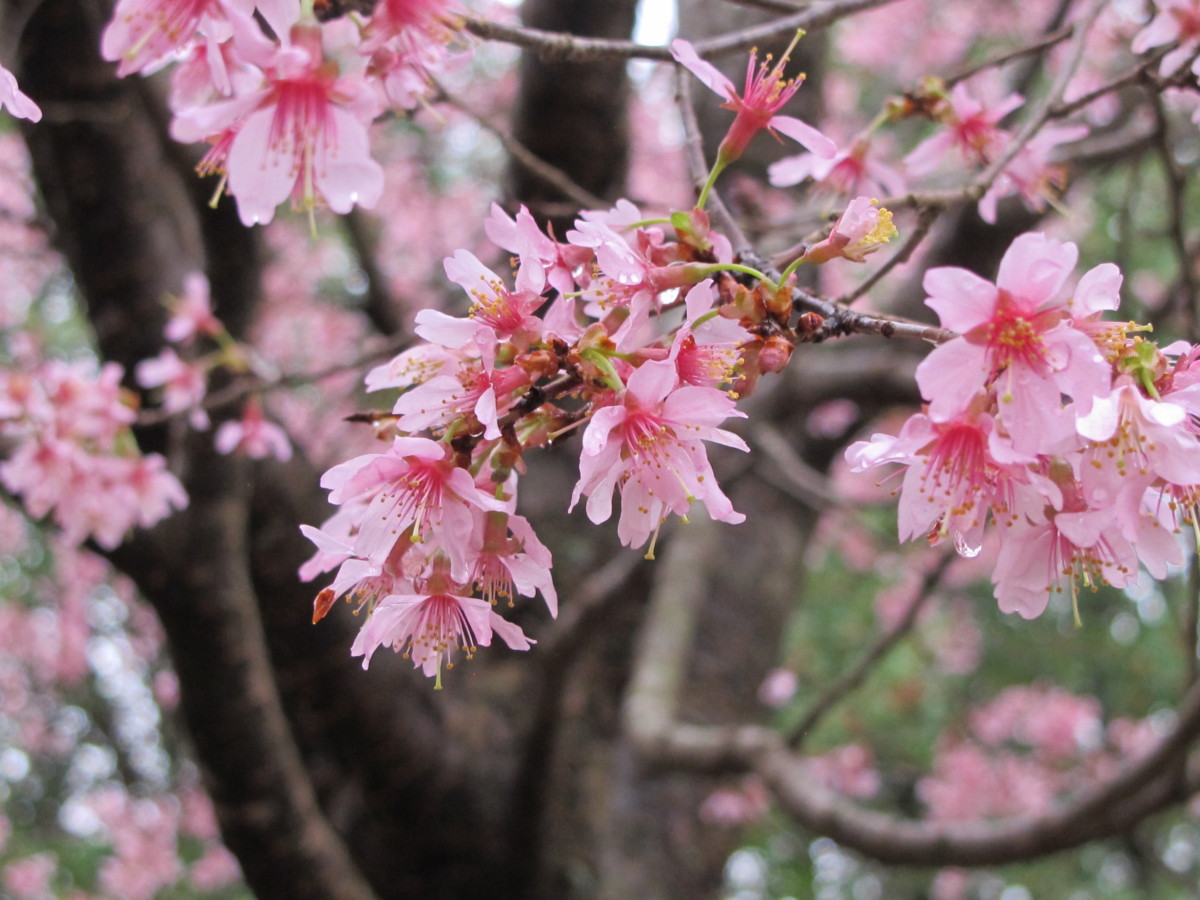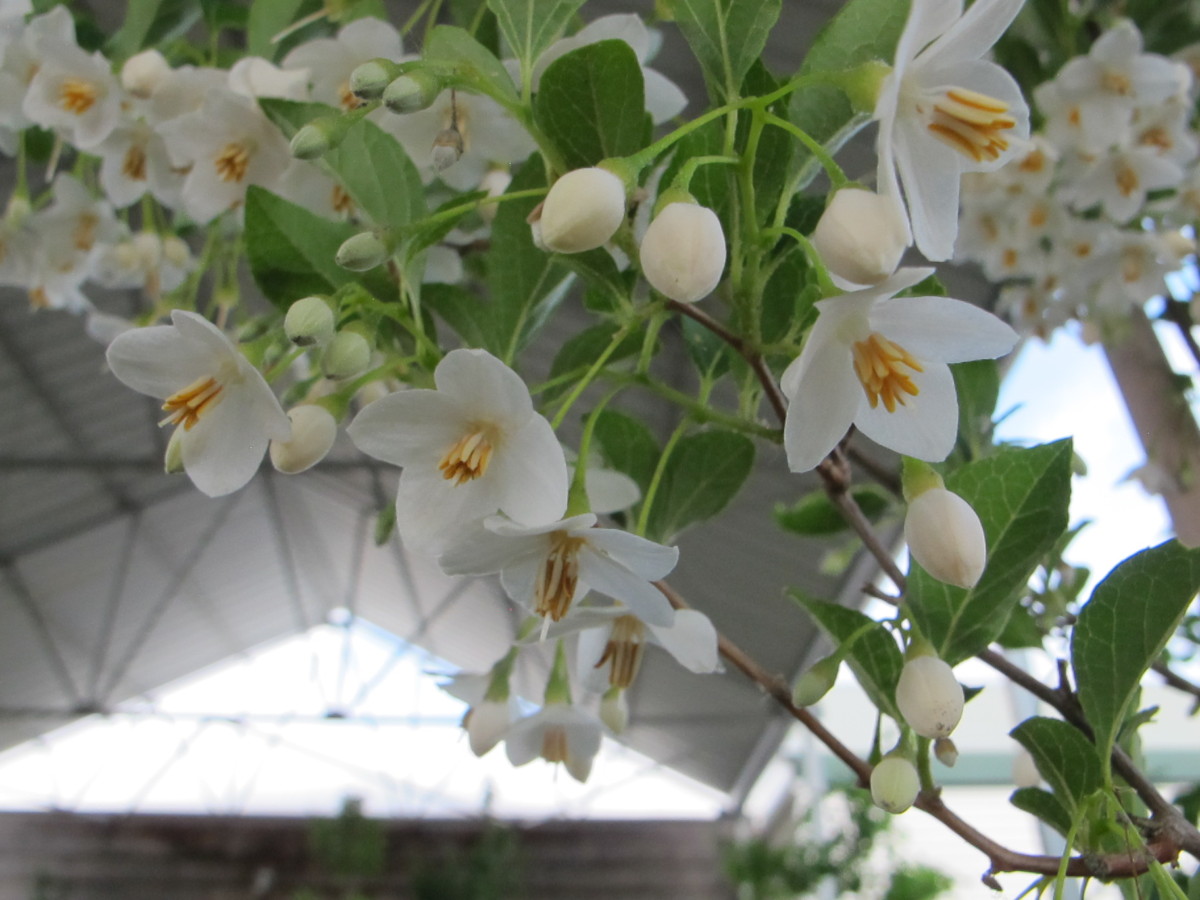Updated 11/4/2024
Tornado!
I’ve been out of town for a few days, visiting family in New Jersey. On the return drive, the weather report on Charlotte’s WBT radio warned of impassable flooded streets and a tornado that had toppled old oaks and mature maples near my home, in Matthews, and in nearby towns. Over 3″ of rain fell last Thursday, swelling streams and rivers and saturating the ground. When the soil is that wet, it becomes more fluid; a brisk wind can push over 200-year-old trees.
And that’s just what happened. Shallowly rooted evergreens and even perfectly healthy bare trees couldn’t stand up to the sustained high winds. Trees with rotten cores (photo, right) fell over at ground level or shattered some distance up the trunk. Healthy or somewhat compromised—it didn’t seem to matter. Tornadoes choose their victims indiscriminately.
On Friday, I drove around and saw those damaged trees, twisted and gnarled, some sheared of all their branches and leaves. On Pineville-Matthews Rd., the junipers, cypresses, and evergreen magnolias fell like dominoes, one against the next. For all the beauty Nature reveals to us, there’s always the flip side, too—devastation and death.
Police were out directing traffic. Stoplights were dark, and trees leaned on overhead wires. When this happens, remember to observe local laws. Here, we treat an intersection with a non-functioning stoplight as a 4-way stop. I was pleased to see cars on the main road come to a stop to allow vehicles lined up on the side streets their chance to proceed.
The main roads had been cleared of debris, but some of the side streets were still littered with limbs, piles of greenery, parts of roofs and fences, and road signs.
Aftermath of the Tornado
After the tornado, something will benefit and grow after the wreckage has been removed. Shrubs and flowers shaded by the thickening canopy will be reinvigorated by brighter light. And, of course, more weeds will grace our gardens.
Sure, we’ll have to move the shade lovers to more appropriate locations, or plant a new tree. Residents whose homes border main thoroughfares will reestablish screening plants that provide a measure of privacy. The silver lining in this cloud could also mean more fruitful harvests from our blueberry bushes and vegetable gardens. But certainly, we’ll miss our trees.
Roots or Consequences
Checking the NOAA (National Oceanic and Atmospheric Administration) website confirmed the presence of a few tornadoes in the Carolinas on February 6, 2020. Around 12:15 p.m., an EF1 tornado cut a swath 150 yards wide and 17½ miles long south of Charlotte, from Pineville to Matthews. It lasted 16 minutes, with winds that reached 95 miles per hour.
Warm moist air masses clashed with strong cooler fronts, setting this severe weather pattern into motion. Local media recorded some of the devastation.
There were no deaths in this area, although two casualties, unfortunately, were reported elsewhere in North Carolina. I spoke with a man in Matthews, who said his aunt and uncle were in the room right below where part of a tree trunk had crashed through the roof. They were not injured, thankfully, but the Fire Department declared the home unsafe to occupy (photo, above).
Pancakes
It’s incredible, when viewing the uprooted plants, that almost all the tree roots are in the top foot or 18″ of the soil. You’d think these 50′ or 80′ tall trees would have deep roots that anchor them to the ground, but most do not.
Compacted soil, bedrock, and natural growth patterns for the species keep the roots shallow. And there is more of the necessary oxygen, fertility, and microbial activity closer to the surface. So, tree roots spread out from the trunk in search of water and nutrients, extending beyond the drip line.
When the force of the wind is stronger than the ability of the tree’s roots to hold it in place against resistance, the tree will succumb. Plants might hold up at first, but, after a while, trees can begin to fall over.
- A toppled tree in Matthews, with a 10′ wide “pancake” of roots.
- Three 40′ tall pine trees in the Raintree area.
Time for a Tree Check-Up
This might be a good time for a tree health check-up from a licensed arborist. Granted, there are no guarantees. But a trained specialist can see aspects of the tree’s growth that could indicate the likelihood of trouble in the future. Pruning trees properly when they’re young and as they grow, if they need pruning at all, will improve their branching structure for decades to come.
The arborist might find decay where a few trunks come together 30′ from the ground. This is where leaves and water might have been collecting for years, eventually rotting the bark. Decay then spreads deeper into the interior wood. Also, as trunks and large congested branches grow in girth, they compete with each other, compromising transport of water and nutrients, and, therefore, structure and strength. Many of the trees that came down in this tornado had rotten cores.
Another weak point occurs where several stems grow as a result of topping or heading back the trunk or side branches. Those epicormic shoots (photo, above) have feeble connections to the wood and compete with each other. Most of them fall from the tree over time. Never top a tree! It’s a difficult decision to make, but you’re probably better off replacing large trees that have outlived their usefulness (too large, too close to the house, cracking the foundation) instead of topping them.

Girdling root on maple tree and no trunk flare.
Another clue to look for is a missing flare. That part of the trunk looks flat (vertical) where it descends into the ground. This usually indicates a girdling root or some other obstruction underground, and possibly a sparse root system on that side. Rocks and soil discarded against a tree trunk can cause problems later.
Mother Nature does not issue guarantees. Sturdy trees that give no indication that anything is wrong can blow over in high winds, regardless of the care it has been receiving.
Trees for Shade
In areas with hot summers, such as here in the Carolinas, we love our trees. We value our family’s lives and the integrity of our homes, of course, so it makes sense to evaluate the plants on our properties, especially those standing close to structures.
Certainly, a mature tree canopy helps reduce energy bills and adds aesthetic value. But ignoring unhealthy trees or pruning them improperly can be very costly in the long run.
Alternatives to Towering Trees
Although you might be inclined to replace a dead tree with the same species, now is the perfect time to reconsider that choice. Visit a reputable garden center and ask the tree expert for recommendations. ‘Bradford’ pear? Silver maple? Weeping willow? No thanks!
There are many other options that will fit better in your landscape. Find species with strong branch attachments, and those that won’t litter the ground and fill the gutters with twigs or fruits every time a breeze blows through the neighborhood.
Landscape Considerations
Always look at the scale of the site, how your home fits into the local surroundings. A 3-story Victorian could look lovely framed by a natural stand of stately scarlet oaks. If they’re growing 15′ from the sunroom, you could enjoy the shade for 10 years or even 50. But a microburst or a tornado could send tons of wood hurtling toward Logan’s antique Firebird…or your home.
It’s safer to locate the tallest trees much farther from the house. Then you won’t have to deal with the oak trees’ acorns in the driveway every year.
Ask about native trees and shrubs, although there are so many beautiful exotic species I must have. Each species has many cultivars to choose from. If one tree doesn’t seem substantial enough, plant three or five of them in a raised bed, properly spaced. Perhaps large shrubs will work better for your situation or in tight spaces.
Add drifts of small shrubs, perennials, groundcovers, a patch of colorful annuals, and spring flowering bulbs for a complete garden. Mulch to suppress weeds, conserve moisture, and prevent erosion.
A Short List of Small to Medium-Sized Trees
Check with local garden centers, agricultural extension offices, botanical gardens, and native plant societies for suggestions. Here are several of the species (native and non-native) that grow in this part of North Carolina:
- American hornbeam (Carpinus caroliniana)
- Birch (Betula ‘Whitespire Senior’ and others)
- Carolina silverbell (Halesia)
- Chaste tree (Vitex)
- Chinese pistache (Pistache chinensis)
- Crape myrtle (Lagerstroemia indica)
- Dwarf evergreen magnolia (Magnolia grandiflora ‘Little Gem’)
- Eastern redbud (Cercis canadensis)
- Flowering dogwood (Cornus spp.)
- Fringe tree (Chionanthus spp.)
- Full-moon maple (Acer japonicum)
- Golden chain tree (Laburnum)
- Japanese maple (Acer palmatum)
- Japanese snowbell (Styrax japonica)
- Lilac (Syringa)
- Magnolia (Magnolia spp.)
- Paperbark maple (Acer griseum)
- Parrotia (Parrotia persica)
- Peanut butter tree (Clerodendrum trichotomum, can be invasive)
- Serviceberry (Amelanchier)
- Sourwood (Oxydendrum arboreum)
- Stewartia (Stewartia pseudocamellia)
- Witch hazel (Hamamelis spp.)
- Smaller varieties of oak, birch, maple, tupelo, plum, crabapple, cherry, conifers.
Do Your Research
Research cold/heat hardiness (USDA plant hardiness zones), disease resistance, forms and colors that enhance your property’s appearance, and seeds or fruits that feed wildlife. Include some natives in your garden to support diversity of local insect and animal species.
- One of the small cherry trees.
- Japanese snowbell, Styrax cultivar.
- Fall color of crape myrtle.
Severe weather events can cause considerable damage to our homes. Each year, they claim human lives. The cost for cleaning up and repairing the damage is quite high, but, of course, some of the losses we can’t recover.
The United States leads the world in the number of tornadoes, averaging more than 1,000 annually. North Carolina averages 22 per year. The states with the highest number of tornadoes, in descending order, are Texas (135/year), Kansas, Oklahoma, Nebraska, and Iowa.
Although a tornado will alter the look of our landscape, this is an opportunity to view it with a fresh perspective. Looking into the future, planting smaller trees and shrubs appropriate for the site might prevent the heartache of real loss.
